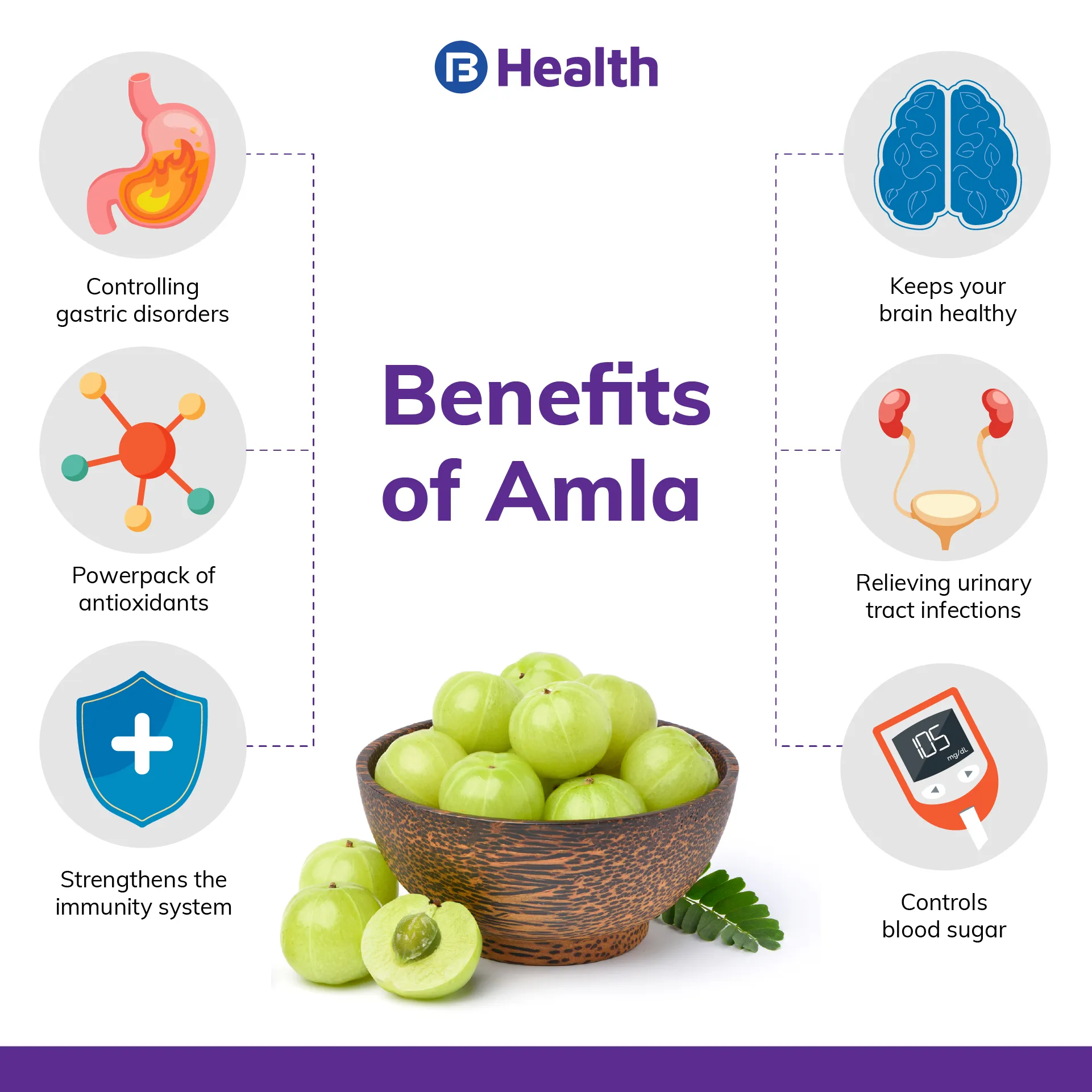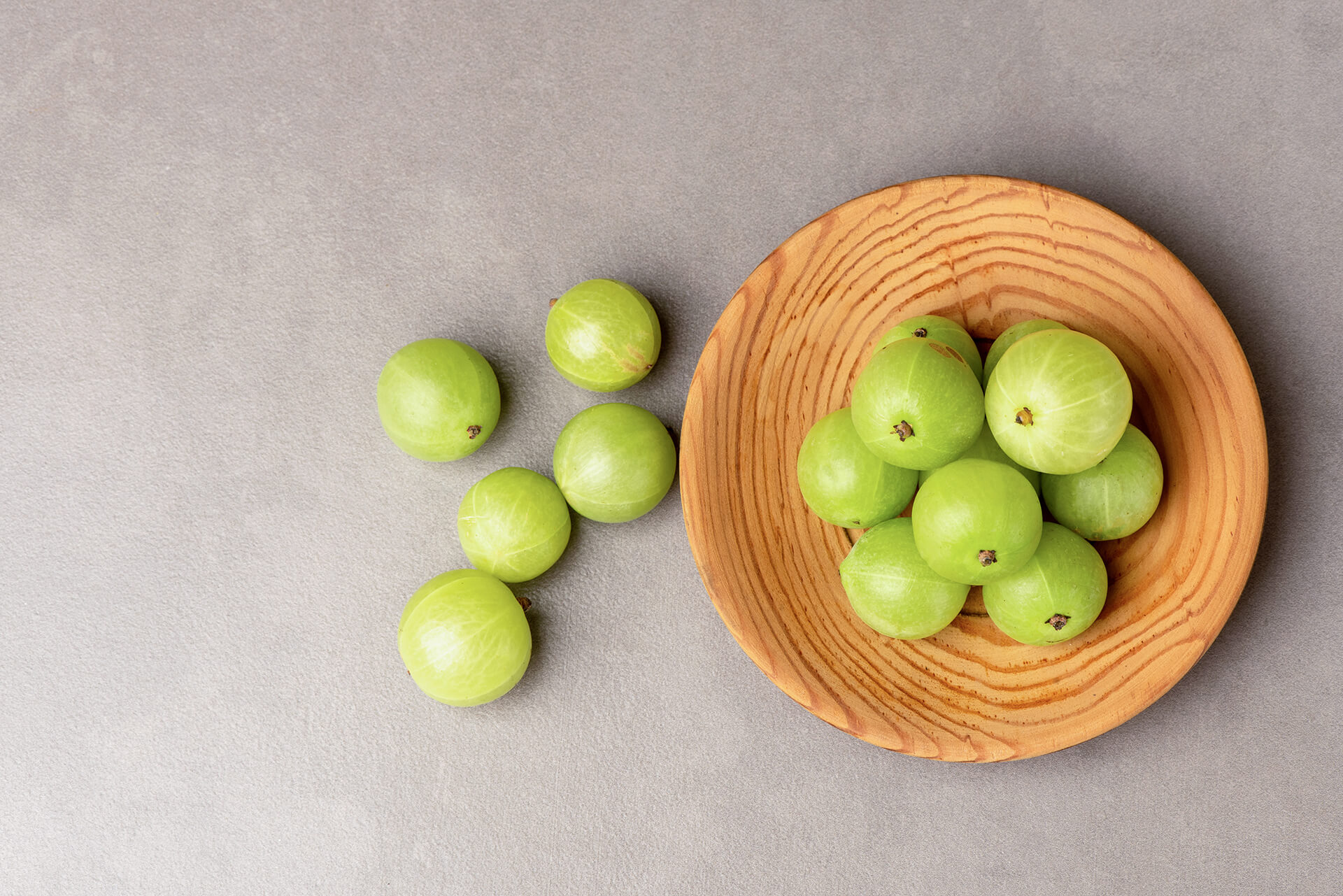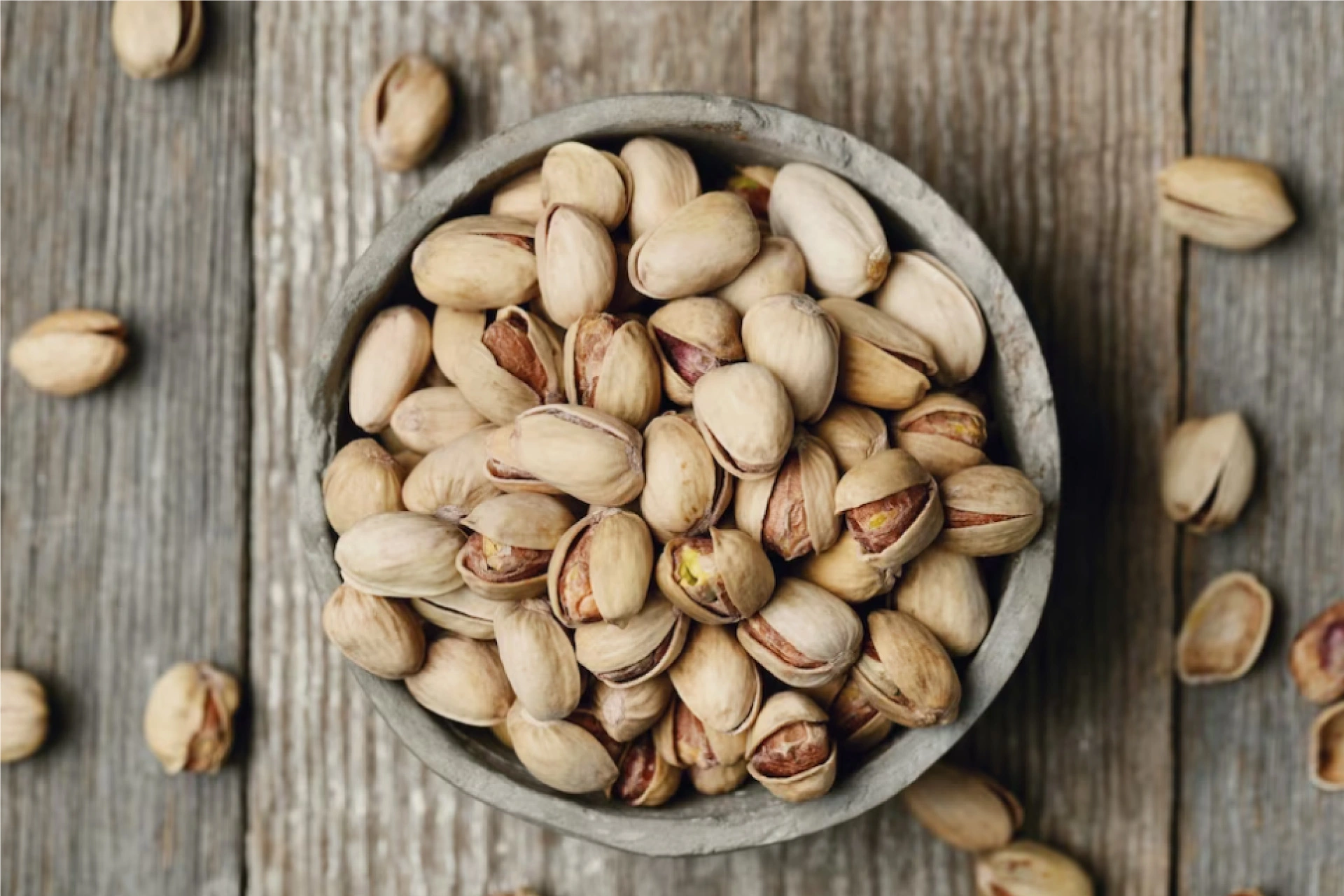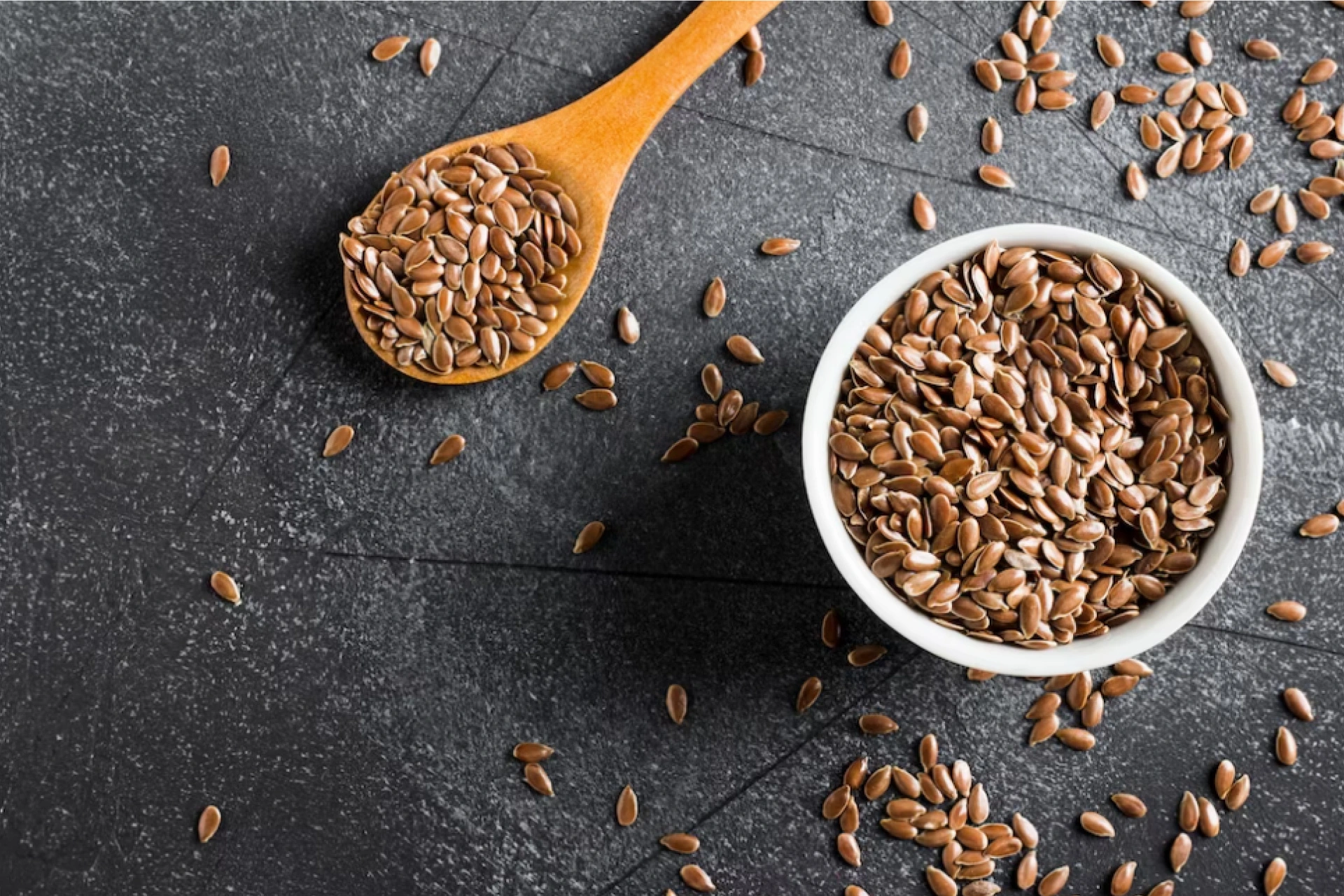Ayurveda | 14 min read
Amla: Nutritional Value, Benefits, Recipes, Side Effects
Medically reviewed by
Table of Content
Key Takeaways
- Among fruits, amla is the richest source of vitamin C and is found in South Asia
- Historical records show uses of amla as a health remedy for at least 1,000 years
- The fruit can be used for the treatment of diseases such as diabetes and cancer
Did you know that amla, known as the Indian gooseberry, contains 20 times the vitamin C of an orange? The bright green, sour berry is very rich in antioxidants. The fruit grows in the South Asian countries of India, Pakistan, and Bangladesh. It is effective in curing various ailments and also helps you maintain your health.
Well-known as the immunity booster, amla is an ingredient used to create mouth-watering condiments. You can eat it in its raw form, as a juice, or as a chutney or pickle. Use amla to prepare delicious candies too. Amla benefits you in many ways. It helps you get relief from coughing and fights free radicals in your body. But, consume it in controlled quantities. If not, the added sugar in the candies can affect your health.
Nutritional Value of Amla
The daily recommended intake of Amla (Indian Gooseberry) for humans is between 75 and 90 mg. The following are its nutritional properties:
- Energy: 58,000 calories
- Proteins: 0.5%
- Fibre: 3.4%
- Fat: 0.1%
- Carbohydrates: 13.7 g
- Calcium: 50 %
- Iron: 1.2mg
- Carotene: 9 micrograms
- Riboflavin: 0.01 mg
- Thiamine: 0.03 mg
- Niacin: 0.2 mg
- Vitamins: 600 mg
Vitamins C and E are abundant in amla. Rich in antioxidants, it boosts defences and fends off free radicals. As a result, it helps to ward off ageing, cancer, and cell damage. Although this fruit has a mildly acidic flavour, it leaves a sweet aftertaste when eaten raw. The interesting thing about it is that despite being sour, it lowers stomach acidity and is frequently used to treat gastritis, ulcers, heartburn, and acid reflux.
If you're still not persuaded, read the following more extensive list of amla's health advantages and you'll understand why you should consume this tart delicacy every day.
Benefits of Eating Amla
There are many health benefits and medical uses of amla. Check some of them below.
Relieves symptoms of cold and cough
Amla helps strengthen your respiratory system. Cough and cold often lead to congestion in the chest. Amla relieves the symptoms of cough and cold. Besides, with the vitamin C content in amla, immune system is also strengthened.
Improves metabolism and helps lower cholesterol
Amla can be beneficial in controlling high cholesterol. It helps to increase the level of PPAR-a, thus reducing the level of total cholesterol in the body. It improves your metabolism too.
Controls blood sugar levels
The astringent and rejuvenating properties of amla helps control blood sugar levels. It lowers the risk of diabetes by decreasing body inflammation.
Helps to control diarrhea
Amla has antispasmodic and astringent properties. This helps in relaxing the smooth muscles of the abdomen. It also helps reduce the contraction of these muscles.
Improves eye health
The vitamin C content in amla fights bacteria. It also helps protect your eyes from infections. Amla is rich in vitamin A, which is vital for your eye health. Vitamin A improves vision and may lower the risk of age-related macular degeneration.

Helps reduce weight
Abdominal obesity is one of the major causes of cardiovascular disease in India. Amla can help in weight loss. The fibre in amla improves digestion and keeps a person fuller for long. The appetizer and digestive properties of amla help control weight and improve your metabolism.
Increases heart health
Amla helps to reduce high BP levels and inflammation in the body. Both these are high risk factors for heart issues. Studies show that Indian gooseberries protect against oxidative damage linked with heart injury. Also, it helps normalise blood fat levels.
Brightens the skin
Indian gooseberry has antioxidants that help prevent cellular damage. Thus, it helps slow down aging. The high content of vitamin C in the fruit helps skin plump up. Amla has also been found to promote hair growth and improve vision.
Reduces heartburn
Amla also helps reduce heartburn and related vomiting as per a study amongst those
with gastroesophageal reflux disease.
Helps fight cancer
Due to the antioxidants present in amla, it plays a role in preventing cancer. In a study on animals, amla extracts were found to have killed certain types of cancer cells. These included lung, cervical, and breast cancer cells.
Amla and immunity
A strong immune system protects you from ill-effects of bacteria, viruses, and toxins. While you can do many things like yoga to improve immunity, when you consume amla, immune system is strengthened, and this keeps diseases away. When it comes to a natural immunity booster, amla has been found to be very effective. It has antibacterial and anti-inflammatory properties. The antioxidant vitamin C decreases inflammation and cellular damage. The vitamins in amla also help you develop antibodies against harmful chemicals and threats.
Benefits of Gooseberry for Skin
The following are some advantages of gooseberries for your skin's health. You can apply it to your skin or take it with honey to reap the benefits.
Anti-Ageing Properties
Drinking gooseberry juice slows down the ageing process of your skin. Amla is richly packed with antioxidants that can fight ageing cells and improve the appearance of your skin. Simply drink amla juice with some honey to sweeten it. Amla juice helps your skin in the long run by avoiding wrinkles, fine lines, dark spots, and premature ageing.
Acne Treatment
For acne treatment, apply an amla paste to the afflicted areas of your face, and wash it off as soon as it dries (15 minutes). This aids in treating acne-related breakouts, fine wrinkles, and scars. In addition, Amla is a well-known natural blood purifier that prevents acne scars and breakouts.
Healthy Skin Tone
Young skin contains a lot of collagen, giving it solidity and a soft appearance. Amla juice enhances vitamin C levels along with helping in collagen formation in the skin upon regular consumption, smoothening and evening your skin tone out as a result.
Treats Skin Pigmentation
Amla juice cleanses your skin and lessens skin pigmentation when applied topically or consumed. Apply some amla juice to your face, and after it dries, wash it off. Regularly performing this helps in fading skin pigmentation and removing other marks.
Removes Dead Skin Cells
Amla juice is thought to revitalise skin and add an additional layer of skin brightness, making skin shine even more. In addition, Amla juice is a fantastic cleaner whether it is applied topically or taken internally. This will aid in the removal of dead cells and encourage anti-ageing.
Benefits of Gooseberry for Hair
Your hair can benefit from gooseberries by appearing silky and smooth. In India, this is a traditional herbal remedy that has been used for many years to prevent dandruff and dry hair. These are some advantages of gooseberry for hair.
Natural Hair Straightener
Gooseberry paste is a natural hair straightener. Also, gooseberry paste or juice tends to strengthen hair growth and heal hair follicles. Just apply some amla juice to your scalp and let it air dry for 30 minutes. Wash it off with lukewarm water when it dries. Your hair will become stronger and shinier as a result.
Prevents Premature Greying
Hair that is prematurely grey is one of the first indicators of ageing quickly. Just add some gooseberry juice to your hair and let it air dry for 30 minutes is all that is required. Vitamin C and antioxidants found in amla juice help stop hair loss and early greying.
Stops Dandruff
Dandruff can be a very important problem to deal with. There are a lot of anti-dandruff shampoos on the market, but why not try something natural and get rid of dandruff for good? Use amla juice to restore damaged hair strands and add an additional layer of shine.
Natural Hair Conditioner
Amla juice helps to make hair smooth and lustrous. Just combine some henna and amla juice, then gently massage the mixture into your scalp. Once it has dried, you can wash it out with some lukewarm water to give your hair that extra smoothness and shine. This will make your hair look healthy.
Just keep in mind that amla may also dehydrate your skin. So, moisturise well and do not overdo these skin or hair rituals.
How to Use Amla?
Although Indian gooseberry fruits can be eaten fresh, most people may not find them appetising due to their extreme sourness. In India, they are frequently candied or pickled in simple syrup. Dal, a classic lentil meal, is also made in some parts of India using Indian gooseberries.
Amla fruit powders are also promoted for use in hair and skin care products due to their high vitamin C content. Also, you can purchase amla fruit oils designed specifically for use on the skin and hair.
Supplements made from Indian gooseberries are typically offered and sold as amla fruit powder or capsules containing powder. The powder can be added to drinks and smoothies and used to create tea. Each serving of supplements typically contains 500–1,000 mg of Indian gooseberry powder.
If you are on blood thinners or diabetes drugs (or any other medication), you should consult your doctor before taking it.
Amla Healthy Recipes
The best way to benefit from this fruit is to drink the juice of fresh amla. From December to April, amla can be found easily. If you cannot tolerate the sour shot, try one of these delicious alternatives instead:
Dried Amla
Cut the amla into small pieces after de-seeding. Combine with a little salt and allow to dry for a few days in the sun. After fully dehydrated, store in a dry jar for the perfect snack to eat while travelling.
Pickled Amla
Amla can be soaked in sweet water to make a sour murabba or a hot and spicy amla achaar.
Amla Chutney
Composition:
- Amla
- Four curry leaves
- Two green chillis
- Two little pieces of ginger
- Pinch of cumin
- Pinch of hing
- Rai (mustard) seeds
- Salt as desired
- One teaspoon oil
Recipe:
- Peel the gooseberry after five minutes of soaking in hot water. Take out the seeds
- Add salt, ginger, jeera, coriander leaves, and green chillies. Make a paste without any water in a mixer
- Add hing and rai to hot oil
- With this, temper the paste and combine
Nutritional value (100g serving):
- Protein 0.40%
- carbohydrates 75.40%
- Fat 0
Amla Sabji
Ingredients:
- 4 Amla
- One freshly chopped onion
- 1 tsp paste of ginger and garlic
- 1 tsp green pepper paste
- A few curries leaves
- 2 tsp Rai seeds (mustard)
- 1 tsp Red chilli powder
- ¼ tsp Haldi (turmeric powder)
- 3 tsp Methi (fenugreek) powder
- 1 tsp Dhania (coriander) powder
- 1/4 tsp Jeera (cumin) powder
- Add a little (pinch) hing
- Salt as desired
- Oil according to need
Method
- In a pressure cooker, cook amla with a cup of water for two whistles
- Remove the amla seeds
- In a frying pan, heat oil. Let it sputter after adding hing, rai, and kadi patta
- Fry for a few minutes after adding the onion, ginger-garlic paste, and green chilli paste
- Over a medium flame, add the dry masalas and stir
- Stir thoroughly after adding amla and salt. Turn off the stove when the contents are dry
Amla Side Effects
Please take care of the following before consuming amla:
Increases Bleeding
Amla has a lot of vitamin C, which can make blood vessels more elastic and supple, which helps to improve circulation and lower blood pressure. On the other hand, if you have a bleeding issue or are taking anticoagulant medicine, you should use extreme caution and limit how much amla you consume.
Harms the Liver
Amla is a fantastic source of antioxidants, and its hepatoprotective properties are helpful for treating liver issues. When blood glutamic pyruvic transaminase levels are elevated when amla is a component of an ayurvedic solution, there is a potential that you will experience liver issues (SGPT).
Leads to Acidity
The Indian gooseberry's vitamin C level contributes to the acidic flavour of the fruit. The fruit is frequently consumed on an empty stomach to aid in detoxifying, although doing so may produce acidity, which in turn may upset your stomach.
May result in Constipation
Amla is high in fibre and helps treat diarrhoea by reducing gastrointestinal motility. Amla does, however, bulk up and hardness your faeces when consumed in excess. To avoid constipation, you must increase your water intake by mixing amla juice or dried amla powder with water.
Impacts on Blood Pressure Levels
Due to the pickles' salt content, those who have hypertension and renal diseases should refrain from eating amla in pickle form. Consuming salt raises the level of sodium in the blood, which lowers the kidneys' capacity to excrete water. The excess fluid and pressure on the kidneys cause high blood pressure.
Burning Sensation During Urinating
Although amla's high vitamin C concentration is undoubtedly good for your health, eating too much of it can also have negative effects. For example, if you consume a lot of amlas, you could experience hazy pee, foul-smelling urine, and burning sensation in urine.
May Make Cold Worse
Amla is a natural coolant; thus, eating the fruit by itself or taking amla powder can worsen cold symptoms and worsen the situation. Only triphala, or a mixture of amla powder and honey, can be consumed with amla during a cold. This will effectively treat colds and coughs.
Potential for Allergic Reactions
Suppose you have an allergy to Indian gooseberry. In that case, you can suffer from problems including stomach pain or cramps, nausea, vomiting, hives on the skin and face, redness and swelling around the mouth, itchy skin, headaches, dizziness, and lightheadedness.
Skin Moisture May Be Lost
Amla has diuretic qualities that will dehydrate your skin. After consuming amla, you must continue to drink water to keep your body hydrated. You will begin to experience throat dryness as soon as you begin consuming amla, so make sure you drink lots of water.
How to Consume Amla
There are several ways of incorporating this tart fruit into your life and diet. You can consume it in its raw form, or make amla immunity booster juice. Use the berries in chutneys and curries or prepare pickles and jams.
Indian gooseberry supplements are also often sold in the form of fruit powder or capsules. Amla powder benefits your skin and hair and used in skincare products. You can also use amla fruit oil for your hair and skin health.
The fruit is a good source of nutrients and vitamins required for your body. But, you should take the right dosage recommended by your nutritionist. For example, eating amla candies in an uncontrolled manner can lead to tooth decay. It can further lead to cavities, or even diabetes because of the added sugar. Additionally, when you don’t eat amla in controlled quantities, it can make constipation worse. As it is rich in vitamin C, the fruit is acidic in nature and can affect your health adversely, especially if the water intake in your body goes down. This is why consulting a nutritionist is necessary.
You can consult the right nutritionist with ease by using the Bajaj Finserv Health. Choose the medical professional you are looking for and select your city. Now use the smart search filters to find the right professional. Book an online consultation or an in-person appointment with the top doctors you see. You can also get discounts and deals from various health partners on the app.
FAQ
What happens if we eat amla daily?
Due to the presence of vitamin A, eating amla on a regular basis helps to strengthen immunity, lowers the risk of age-related macular degeneration, and enhances eyesight. In addition, it aids in weight loss since it contains protein, dietary fibre, and acids like tannic acid, which, among other things, nourish and lessen bloating.
When should you eat amla?
It can be taken whenever and at any time of the day, as advised by dieticians or medical professionals. Nonetheless, it would be best to take it first thing in the morning on an empty stomach for diabetes, weight loss, and high cholesterol. If you have vision issues, amla juice should be consumed at night before sleeping.
Which disease is cured by amla?
- Amla is a fantastic source of antioxidants, and its hepatoprotective properties help treat liver issues
- Amla is also said to have features that are effective in treating and preventing cancer, including radio modulatory, chemo modulatory, chemopreventive effects, free radical scavenging, antioxidant, anti-inflammatory, antimutagenic, and immunomodulatory activity
- Amla is a well-known immunity booster and is also an amazing diabetes treatment
What are some amla side effects on the kidney?
Amla contains vitamin C, which increases hyperacidity. If you have renal disease, regardless of the type. Amla must be avoided. If not, kidney stone issues may arise.
Can amla cure the liver?
Amla is also used to treat cirrhosis of the liver, restore the liver to health in alcoholics with severe liver damage, and treat hepatitis in patients. Moreover, studies have shown that amla prevents the development of liver fibrosis (excessive liver inflammation caused due to liver injury or other clinical conditions).
Does amla reduce fatty liver?
Amla lowers metabolic syndrome and hyperlipidaemia and the chances of liver failure. For those with fatty livers, amla is recommended. You can take amla in any form. However, if you have issues with a fatty liver, try eating it with black salt.
Amla can be eaten raw as a salad by seasoning it with salt. Amla juice is also suitable for consumption in the morning and evening. Amla chips are very healthy and can be consumed.
References
- https://timesofindia.indiatimes.com/life-style/health-fitness/diet/boost-your-immunity-reasons-why-you-must-include-amla-in-your-diet/photostory/75911590.cms?picid=75911777
- https://www.1mg.com/ayurveda/amla-19
- https://www.webmd.com/diet/health-benefits-amla#
- https://www.healthline.com/nutrition/indian-gooseberry#benefits
- https://www.webmd.com/eye-health/macular-degeneration/age-related-macular-degeneration-overview
- https://www.healthline.com/health/gerd
Disclaimer
Please note that this article is solely meant for informational purposes and Bajaj Finserv Health Limited (“BFHL”) does not shoulder any responsibility of the views/advice/information expressed/given by the writer/reviewer/originator. This article should not be considered as a substitute for any medical advice, diagnosis or treatment. Always consult with your trusted physician/qualified healthcare professional to evaluate your medical condition. The above article has been reviewed by a qualified doctor and BFHL is not responsible for any damages for any information or services provided by any third party.





